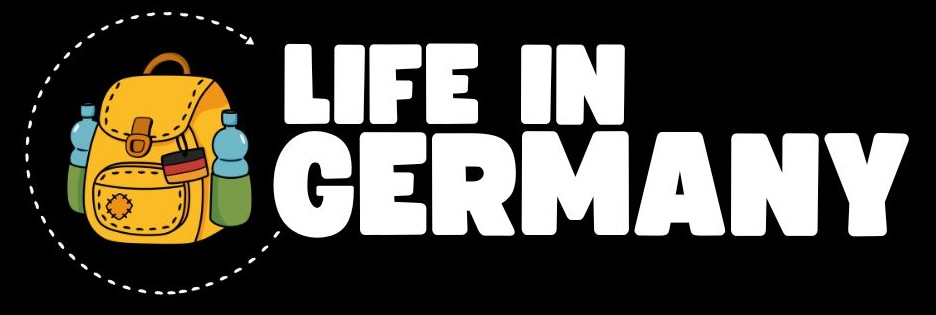Many Germans dream of moving to Canada for various reasons, including better opportunities, a different lifestyle, or love. This blog explores the journey of a German who successfully made the move to Canada, detailing her experiences, challenges, and triumphs in becoming a part of Canadian society. We will delve into the process of obtaining residency, the emotional aspects of relocation, and the importance of maintaining one’s cultural identity while embracing a new home. Join us as we unpack “How this German moved to Canada” and the steps she took to achieve her goals.
How this German moved to Canada
- Initial Steps: The Arrival ✈️
- Temporary Residency: A Short Stay ⏳
- Transitioning to Permanent Residency: The Process
- Costs Associated with Permanent Residency
- Maintaining Dual Citizenship: A Future Goal
- Embracing a New Culture: The Personal Journey ❤️
- Conclusion: A New Chapter Begins
Initial Steps: The Arrival ✈️
When considering a move to Canada, understanding the entry requirements is crucial. For many, including our German subject, this journey began with a simple travel document.
Upon arriving in Canada, she required only an Electronic Travel Authorization (ETA). This is a significant advantage as it allows citizens from specific countries, including Germany, to enter Canada without a traditional visa. The ETA simplifies the entry process, making it easier for travelers to explore Canada.
- ETA Requirement: A valid passport from an eligible country.
- Duration: Generally allows stays of up to six months.
- Cost: The application fee for an ETA is typically low, around CAD 7.
This initial ease of entry provided a sense of relief, allowing her to focus on settling in rather than worrying about complicated visa processes.
Temporary Residency: A Short Stay ⏳
Temporary residency can be a confusing experience for many immigrants. In her case, she did not hold a temporary residency status but instead had to depart Canada every six months.
During her time in Canada, she had the option to extend her stay on one occasion due to a delayed flight, costing her around CAD 100. This extension allowed her to remain in Canada for a little longer, but it was clear that a more permanent solution was necessary for her future plans.
- Options for Extension: Extensions can be granted based on specific circumstances, such as flight delays.
- Typical Duration: Visitors can stay for up to six months at a time.
- Cost Implications: Fees for extensions can vary, but they are generally manageable.
Her experiences highlight the importance of planning and understanding the rules surrounding temporary stays in Canada, especially for those looking to transition into permanent residency.
Transitioning to Permanent Residency: The Process
After living together for a year, the couple was ready to apply for permanent residency. However, the journey was not without challenges.
Since they were not married at the time, they opted for the common-law route, which required them to prove they had been living together for at least one year. This step is crucial for many couples in similar situations, as it establishes a legitimate relationship in the eyes of immigration officials.
Once they met this requirement, they initiated the permanent residency process, which took approximately ten months to complete. This timeframe can vary depending on individual circumstances and the specifics of each application.
- Common-Law Requirements: Proof of shared living arrangements and joint responsibilities.
- Application Process: A thorough review of documentation is required.
- Timeline: Expect delays; ten months is a reasonable estimate.
Understanding the intricacies of the application process is vital for anyone considering a similar path. It requires patience, organization, and attention to detail.
Costs Associated with Permanent Residency
Every immigration process comes with its own set of financial obligations. In her case, the total cost for obtaining permanent residency was around CAD 1,500, which included various fees.
These costs encompassed everything from fingerprinting to medical examinations and application fees. While this may seem daunting, it is essential to budget for these expenses to ensure a smooth transition.
- Breakdown of Costs: Include fingerprinting, medical exams, and application fees.
- Financial Planning: Set aside funds specifically for immigration-related expenses.
- Additional Fees: Be prepared for unexpected costs that may arise.
Understanding the financial implications of the immigration process can help prospective immigrants prepare for their journey to Canada effectively.
Maintaining Dual Citizenship: A Future Goal
One of the most common questions for immigrants is whether they must give up their original citizenship. In her case, she still holds her German passport and has no intention of relinquishing it.
Currently, Canada allows dual citizenship, which means she can maintain her German nationality while enjoying the benefits of being a Canadian permanent resident. This is a significant advantage, as it allows her to travel freely between both countries and maintain her ties to her family back in Germany.
- Dual Citizenship: Understand the laws regarding citizenship in both countries.
- Benefits: Access to healthcare, education, and other social services in Canada.
- Travel Flexibility: Easier access to travel between Germany and Canada.
Her situation exemplifies the importance of researching citizenship laws and understanding how they can impact one’s life as an immigrant.
Embracing a New Culture: The Personal Journey ❤️
Moving to a new country is not just about legal processes; it is also about cultural adaptation. Embracing Canadian culture (like Thanksgiving) while retaining her German identity has been a significant part of her journey.
She has navigated the complexities of integrating into Canadian society while celebrating her heritage. This balance is essential for many immigrants, as it helps them feel more at home in their new environment.
- Community Involvement: Engaging with local communities can foster a sense of belonging.
- Cultural Celebrations: Participating in events that honor one’s heritage can be fulfilling.
- Language Skills: Improving language proficiency can enhance communication and integration.
Her story highlights the importance of finding a balance between embracing a new culture and maintaining one’s roots. This journey of German moved to Canada can be enriching and fulfilling for many immigrants.
Conclusion: A New Chapter Begins
From navigating the complexities of temporary and permanent residency to embracing a new culture, her story serves as an inspiration for many aspiring immigrants.
As she continues to build her life in Canada, her experiences can provide guidance for others considering a similar path. The key takeaway is that while the process may be daunting, it is achievable with proper planning, patience, and a willingness to adapt.
For anyone looking to move to Canada especially , understanding the immigration process, the costs involved, and the importance of maintaining cultural identity are crucial steps on the journey. With determination and the right support, a new life in Canada is within reach.
Made with VideoToBlog





